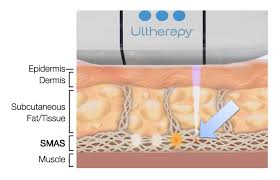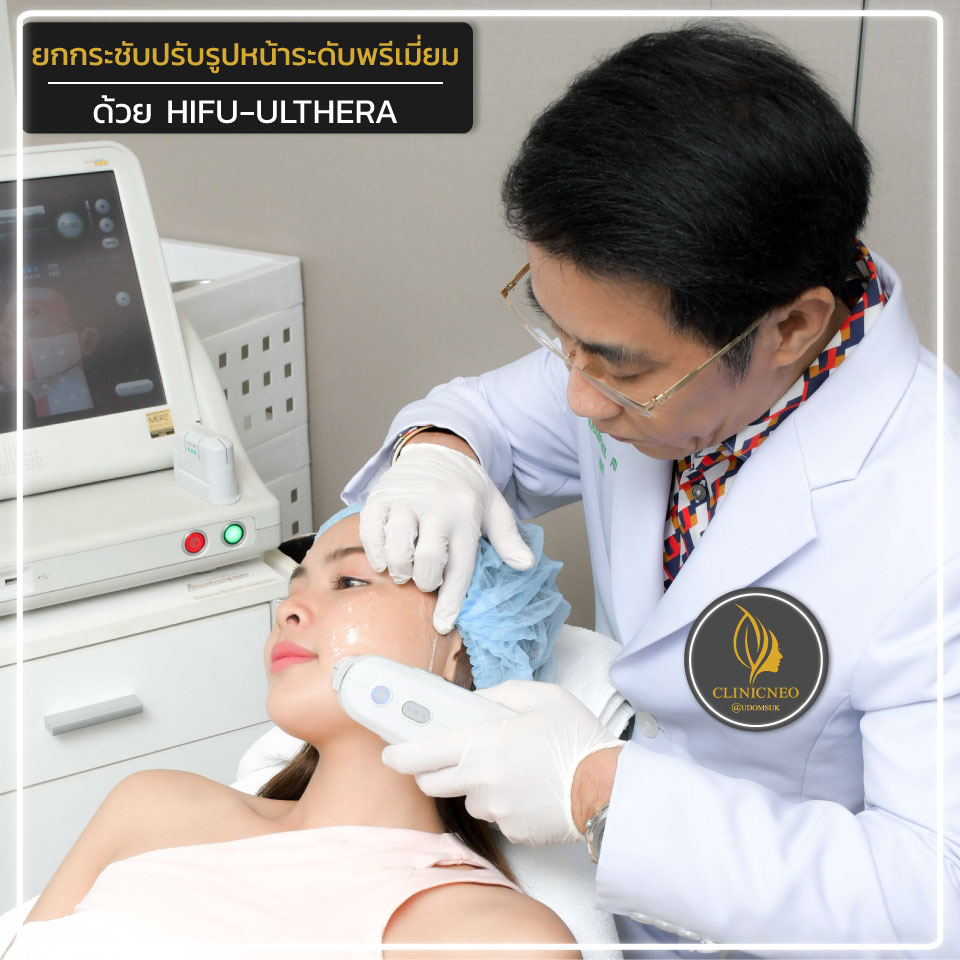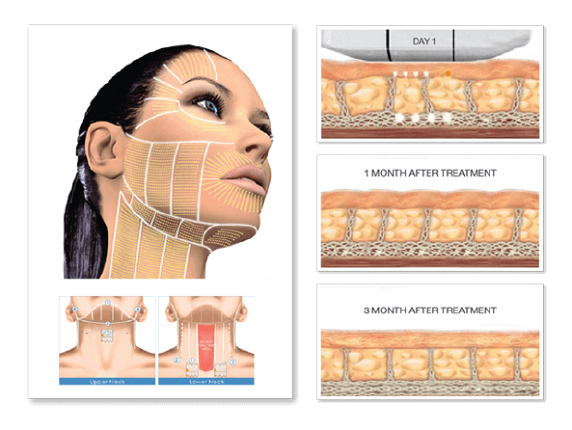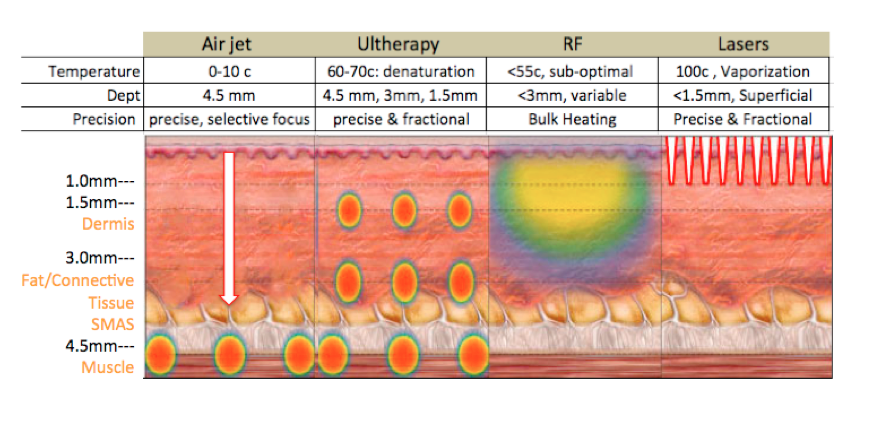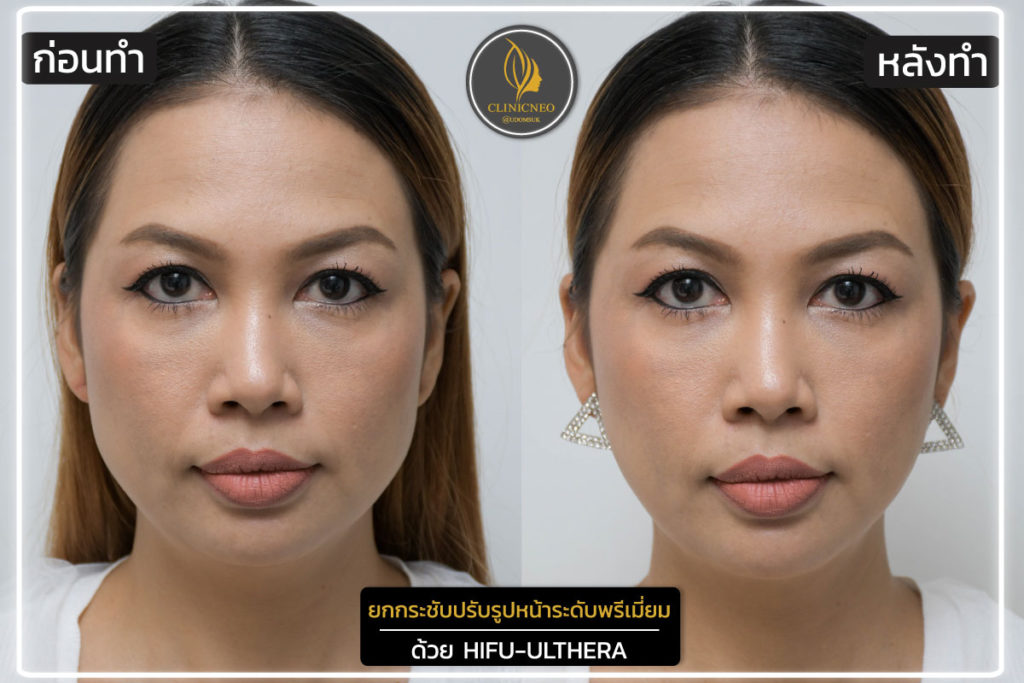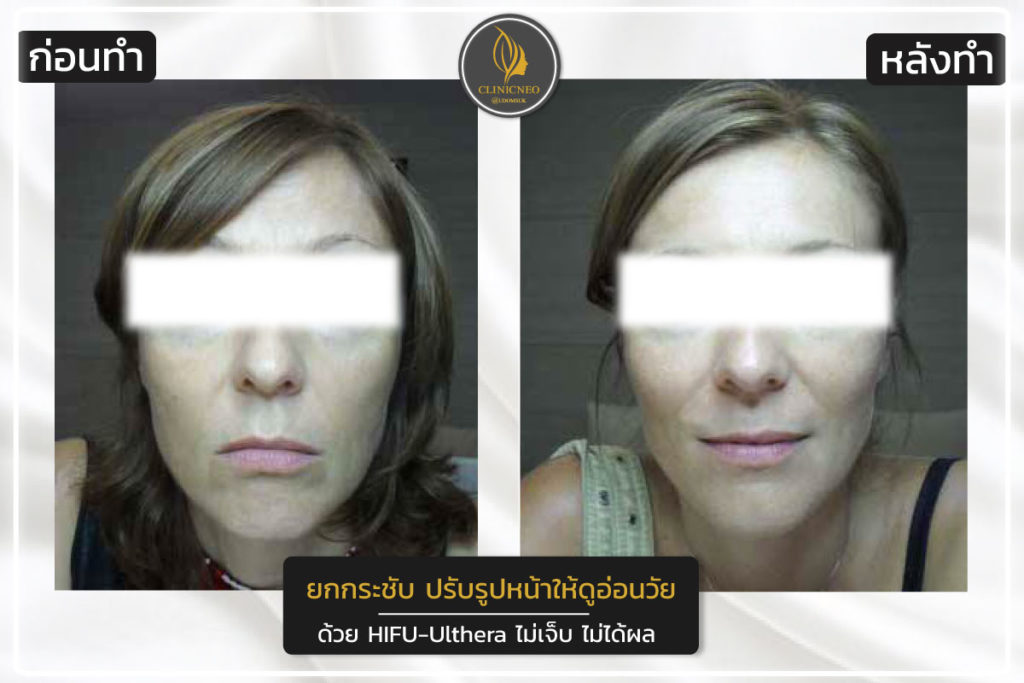Ulthera (Ultherapy®) : non-surgical face lift indication
About Ulthera
Ulthera, Inc. is a global medical device company focused on developing and commercializing technologies for aesthetic and medical applications using its therapeutic ultrasound platform technology.
The Ulthera® System is the first and only energy-based device to receive U.S. FDA clearance for a non-invasive aesthetic lift indication. It is used in a procedure known as Ultherapy®, which is an FDA-cleared treatment to lift skin above the eyebrow, on the neck , under the chin ,on the upper chest,etc
How is Ultherapy different from other cosmetic procedures
Ultherapy targets deep tissue below the skin, an area typically reached with cosmetic surgery. Ultherapy also provides ultrasound imaging, which allows doctors to actually see the layers of tissue that are targeted during the treatment, and thus ensure the energy is delivered where it will be most effective.
Who is a good candidate for Ultherapy?
Someone with skin that has “relaxed” to the point of looking less firm. A lowered eyebrow line or sagging skin on the neck or the jowls, is often the first sign of “maturing” skin. Typically, those in their thirties and older who have mild to moderate skin laxity are candidates. Ultherapy is also a good option for people who want to “stay ahead of the game” as well as those looking to prolong the effects of cosmetic surgery.
What results can be expected?
Ultherapy addresses mild to moderate loose or sagging skin by reconditioning and renewing the collagen underlying the skin. Ultherapy can lift the brow, which in turn reduces excess skin on the lids, opens up the eyes, and gives a more refreshed look overall. It can also improve the appearance of loose skin in the jowls or neck.
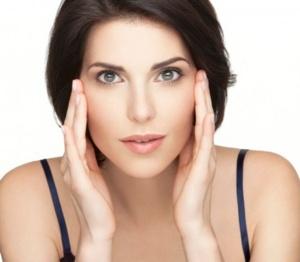
skin sagging 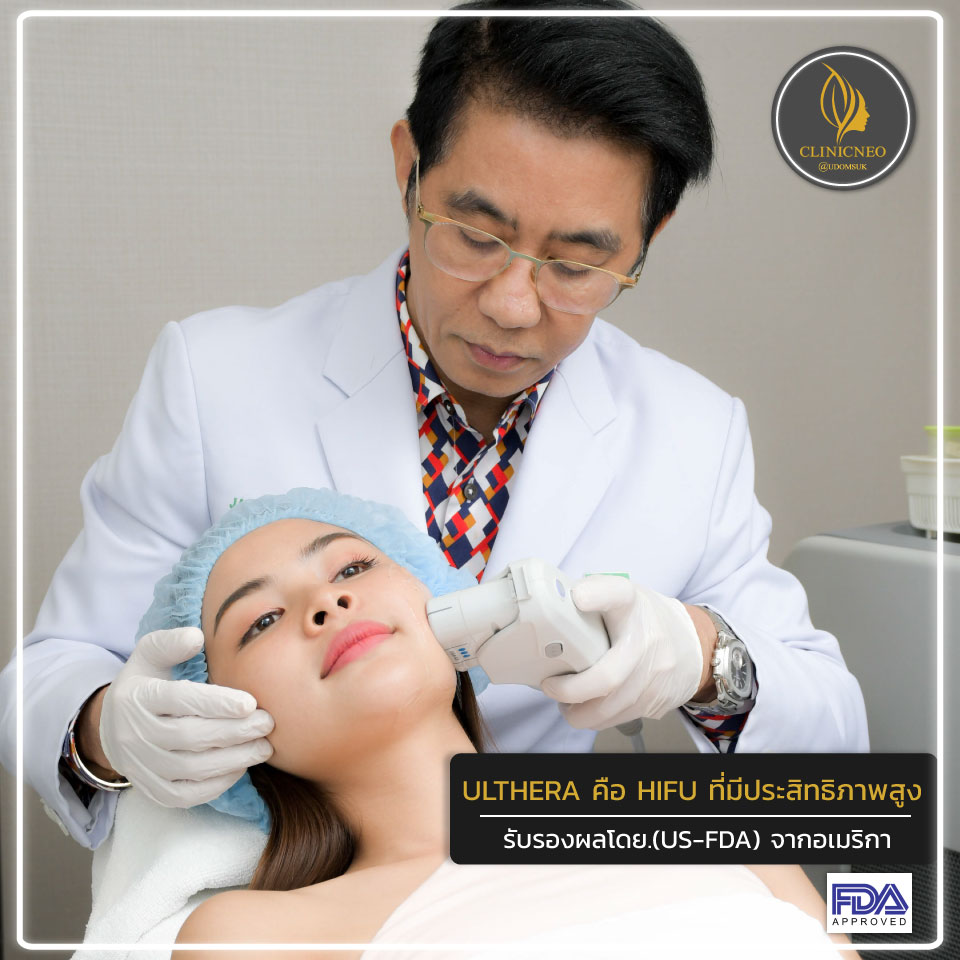
How does Ultherapy work?
Before we can delve into why Ultherapy works so well, we’ll need a quick anatomy lesson. The skin is composed of layers, not unlike an onion. Peel away the top epidermal layer, and you’ll find the dermal layer – beneath it is a layer of subcutaneous fat. Between the bones and the fat is the SMAS – the Superficial Muscular Aponeurotic System – gliding membrane consisting of connective tissue (a tissue rich in collagen) and muscle. The SMAS, through many extensions, attaches to the layers piled on top of it: the subcutaneous and the epidermal-dermal layer.
It’s no wonder the SMAS is nicknamed the “face’s foundation.” Ulthera uses this structure, heating it with sound waves and thus tightening and lifting the face through all its layers to create a youthful, more natural-looking appearance. Among the youth-inducing results are lifted jowls, tightened muscles, and the improvement of sagging skin. Ultherapy delivers focused ultrasound energy below the surface of the skin to stimulate the body’s creation of new collagen. As a result, skin will lift and tone over a period of several weeks.
The Technology Behind Ulthera
What distinguishes Ulthera from lasers is the precision built into Ulthera – the DeepSEE technology. This technology not only heats the underlying skin, but also allows doctors to see which areas they’re targeting and treat these areas with precision. In a sense, DeepSEE allows doctors to rehearse before actually treating areas.
An initial ultrasound is used to find problem areas, which the doctor then narrows down to specific regions. The doctor then directs the sound waves to the deepest layers of the skin. One great advantage of DeepSEE technology is that not only are problem spots treated, but also the depth of the sound waves is also controlled, usually to 3 to 4 millimeters to target the SMAS.Before we can understand how the sound waves pass through the skin, we’ll need a brief physics lesson. Sound waves can only travel through a medium, such a solid, liquid, or gas. In order to maximize the sound waves absorbed into the skin and minimize reflection, a gel is used before the waves are fired into the skin. Sound waves then travel through the gel-slathered skin, vibrating until they reach areas of high-collagen concentrations (such as the SMAS) where they are absorbed and warm up the soft tissue, provoking an inflammatory response that sets off a healing response that in turn starts up collagen production
What does collagen do?
Collagen is a natural protein that gives skin its youthfulness and bounce by keeping it firmed and toned. As we age, collagen loses its strength, elasticity and the ability to stand up to the effects of gravity that pull the skin downward. Ultherapy jump starts a repair process that strengthens your existing collagen and produces fresh, new collagen.
Is Ultherapy uncomfortable or painful?
It really varies from patient to patient. Some patients tolerate the procedure well while other patients experience significant discomfort or pain while the energy is being delivered. This pain and discomfort are temporary and a signal that the collagen-building process has been initiated. We have extensive experience with pain management for Ultherapy and are able to offer the highest possible level of patient comfort during the procedure. The doctors will adjust the procedure based on each patient’s response and comfort threshold and will provide numbing injections as well as oral medications as needed for patient comfort. There is no pain after the procedure and patients usually tell us that any discomfort was well worth it given the benefits to come.
How long does it take to recover?
Typically there is no downtime, and patients can return to their normal activities after treatment.
How long does it take to see results?
Patients may see some initial effect but most lifting and toning will take place over 2-3 months, as tired collagen is replaced with new, more elastic collagen. As this collagen-building process continues, further improvements can appear up to 6 months following a procedure
How long do the results last?
Patients treated with Ultherapy still have fresh young collagen a year after the procedure, but skin continues to age. Future touch-up treatments can help keep pace with the aging process, and the appropriate frequency varies for each patient.
Can Ultherapy replace a facelift?
Ultherapy is an “uplift” not a “face lift.” While it is not a replacement for surgery, it is a viable option for those not ready for a face lift or those looking to prolong the effects of cosmetic surgery.
What about treating regions other than the face?
Recent clinical research shows that Ultherapy can be effective in tightening sagging skin on the body, particularly on the chest, abdomen, under the arms and around the knees. If you are interested in areas other than the face, please schedule a consultation with doctors to see if Ultherapy would be a good approach to tighten and smooth your trouble spots.
How does Ultherapy compare to lasers?
Lasers typically address issues in the superficial layers of the skin (e.g. fine lines, wrinkles, pigment changes). Ultherapy addresses the deep skin layer to lift and lend support to the skin. The two technologies address different areas and thus can be used together when a combined approach is desired.
Are there any side effects?
There may be slight redness for a few hours following the treatment, and it is not uncommon to experience slight swelling, tingling or tenderness to touch for a few weeks. These side effects are typically mild and temporary. It is also possible to experience certain post-procedural effects such as bruising and small areas of numbness, but these are less common and will typically dissipate over the two weeks following treatment.
How much does it cost?
Ultherapy typically costs between $ 800 and $3,000 depending on the extent of treatment. You will receive a precise estimate after your consultation with the doctors.
Is Ultherapy safe?
Ultherapy has been cleared by the FDA after demonstrating safety in clinical studies, and tens of thousands of treatments have been performed worldwide without any significant adverse events.
How many treatments are needed?
The majority of patients only need one treatment, while those with a fair amount of laxity may need more than one treatment. Annual touch-up treatments can help slow down the rate of skin aging.
Who is a good candidate for Ultherapy?
There is a broad range of people who can benefit from Ultherapy, but typically those in their thirties and older are candidates. While this is not a replacement for surgery, there are many people who want some lifting, in order to look more refreshed and toned but are not ready for surgery (mentally, financially, or logistically). And then there are younger people who want to “stay ahead of the game” as well as those looking to prolong the effect of surgery.
Related
8 Points Face Lift by Fillers in advance technique
The 8 Point Lift is a specialized non-surgical facelift using dermal fillers to enhance and lift the face for a total rejuvenating effect. It is also known as the Fluid Facelift and the Liquid Lift. The 8 Point Lift targets key areas of the mid-face to lift, contour and revitalise the whole mid-face and lower face.As ...
Mint PDO Thread Lifting for Facial Rejuvenation
What is MINT PDO Thread MINT PDO is from South Korea, and it is a safe & effective absorbable suture made from a biocompatible material called PDO, polydioxanone. With a decade worth of safety track record in surgery, PDO is a safe raw material that has been used for orthopedic and cardiovascular surgery for wound ...
Lip Fillers. The perfect way to enhance your smile
Lip Augementation Lip augmentation using fillers is increasingly more common and is one of the most sought after filler treatments. With celebrity endorsement and many media fuelled horror stories, it is paramount that aesthetic practitioners develop their skill and knowledge in this procedure The Perfect Lip Lips are the central hallmark of the lower face ...
V Beam: Vascular laser and Pulse Dye laser for reddness skin
What is the V-Beam laser This is a laser treatment that uses a built-in cooling cryogenic spray mist onto the skin to help decrease the mild discomfort associated with the treatment, and decrease the possibility of blister or scab formation. This laser produces an intense but gentle burst of light that selectively destroys the blood ...
Plexr Plasma : Non-Surgical Blepharoplasty
Plexr is definitely one of our most interesting developments, a real revolutionary and patented innovation in the field of aesthetic medicine and surgery. PLEXR represents a new and exciting frontier in surgery: it offers both the doctor and the patient an alternative approach to procedures that were, until now, highly invasive due to pre- and ...
Exilis: Monopolar RF Machine 2 in 1 for Skin Tightening and Body Contouring
The Exilis® Elite is a non-invasive face and body contouring device designed to tighten skin while reducing fat and signs of fine lines and wrinkles.It uses a combination of monopolar radio frequency (RF) energy, ultrasound to stimulate fat lipolysis (the breakdown of fat cells) and collagen remodelling (for skin tightening), alongside skin cooking, helping to ...
Mini-Thermage (Athron C ): Skin Tightening and Body Contouring
What Is Mini-Thermage?The Mini- Thermage® system relies on heat to tighten the underlying layers of the skin. This produces an instantaneous and marked reduction in the appearance of wrinkles, jowls, and sagging skin in the neck or brow area. Thermage® is also an effective method of skin tightening for other areas of the body. It ...
Dermal fillers : Somethings to know before you try.
What are dermal fillers? – Collagen and hyaluronic acid beneath our skin helps to keep our skin looking firm and young. With time, sunlight and other environment pollutants, unfortunately, our skin loses its collagen, leading to a loss of firmness, elasticity and volume. And as the aging process continues, skin may start sagging and wrinkling, ...
Gentle Yag Pro U ! New Laser for Hair Removal +Tightening+ Facial Rejuvenation
GentleYAG Technologies: The GentleYAG is the fastest and most powerful Nd:YAG laser on the market today. It effectively treats all skin types, including tanned skin, offering unmatched treatment capabilities in permanent hair reduction, leg veins, facial veins, and wrinkles. Treat patients year-round with GentleYAG’s 1064nm wavelength, multiple spot sizes, variable pulse durations and Candela’s patented ...
Fractional RF Microneedling : New treatment for Acne Scar,Tightening,Large Pores with no downtime
Fractional RF System Fractional RF is the result of the connection between radio frequency and micro needle therapy systems. Fractional RF is a minimally invasive procedure with 25 RF electrodes (the micro-needles). It provides direct heating to both the epidermis and dermis by precise control of the depth of needles from 0.5 mm to 3.5 mm. The treatment has minimum downtime – erythema ...
L-Shape and Strong Jawlines by Botox Injection with Nefertiti Neck Lift Technique
What is the Nefertiti Neck Lift? A well-defined jawline with a long neck has been a sign of beauty since the time of the Egyptians. This new procedure creates a well-toned, smooth neck and lifted jaw line, taking its name from Queen Nefertiti, whose elegant bone structure continues to be admired in modern time The ...
V Beam: Vascular laser for redness acne and abnormal capillaries ,rosacea
What is the V-Beam laser treatment all about? This is a laser treatment that uses a built-in cooling cryogenic spray mist onto the skin to help decrease the mild discomfort associated with the treatment, and decrease the possibility of blister or scab formation. This laser produces an intense but gentle burst of light that selectively ...
Update! Botox injection in advanced technique for cosmetic and medical use .
How does it work? Botox is a neurotoxin. These substances target the nervous system, disrupting the nerve signaling processes that stimulate muscle contraction. This is how the drug causes temporary muscle paralysis. In order for any muscle to contract, the nerves release a chemical messenger called acetylcholine at the junction where nerve endings meet muscle ...
RevLite Laser : Q-Switched Nd:YaG laser for for hyperpigmentation, tattoo removal and Rejuvenations
The RevLite® is the from Conbio (a Cynosure company) and features PhotoAcoustic Technology Pulse® (PTP). With a higher power output, this state-of-the-art aesthetic medical laser delivers greater energy, even at the 6 and 8 mm spot sizes, providing deeper penetration for efficient removal of inks and dermal nevus. Also new with the RevLite® aesthetic medical ...
Dark Circles : Causes and how to treatment
Dark Circles Dark circles under the eyes are a fairly common cosmetic problem for both men and women. Genetics can predispose you to getting these blemishes, especially if you have fair, thin skin. Caused by blood pooling under the eyes, dark circles show more prominently when the skin is fair. Seasonal allergies, loss of collagen, ...
Oxygen Jet Peel : Oxygenate Hydrate and Exfoliate Your Skin
Oxygen Jet Peel Jet Peel skin rejuvenation exfoliates the skin by painlessly removing the dead layer of the skin cells that adversely impact your skin’s natural healthy lustre. It hydrates through a gentle moisturizing jet stream that cools and comforts the skin. It penetrates, rejuvenates and oxygenates your skin by infusing oxygen into the deep ...










